Victoria Rushton
Type Designer
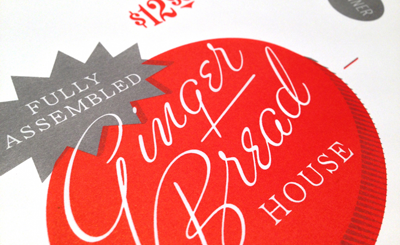
Lettering and half-a-typeface, risographed for a personal project.
Primary design concentration:
Graphic Design
Most preferred tools for designing:
Robofont. Black markers and tracing paper if I’m feeling nostalgic, but let’s be real, that usually passes quickly.
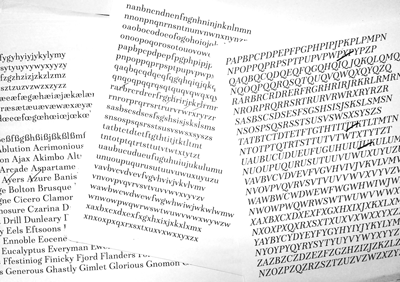
One fiftieth (give or take) of all the kerning proofs I’ve printed for an upcoming typeface.
How and why did you choose to become a designer?
I last-minute decided to go to art school because I always had a knack for drawing. At my college, we choose a major after the first year, and I dove into Illustration because it seemed like they did a lot of drawing there. I illustrated houses, bluejays wearing scarves, crowds of people, repeating floral patterns, the Tokyo skyline, so many owls. It was fine, but it wasn’t for me, I couldn’t make myself care enough about making pretty pictures to do it for a living. I looked over at what my friends in Graphic Design were doing, and the sheer utility of it was so appealing to me, but I didn’t think I could love designing books or websites like I loved drawing. I tried anyway, and trying to teach myself how to use type turned quickly into trying to teach myself how to draw type, and I’ve been stuck on that since.
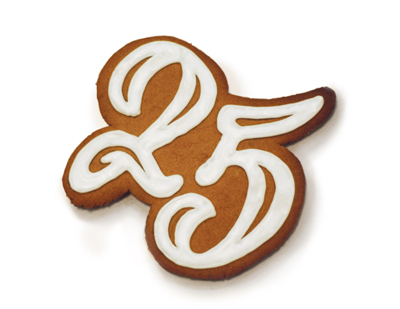
One cookie from the gingerbread advent calendars that apparently I make every year now. Completely unrelated to “Ginger Bread” lettering in previous topmost picture, believe it or not
What are some of the challenges you encounter as a designer and how do you deal with them?
We have such wonderful and efficient tools that, with a little skill, make it really easy to do something that looks superficially polished very quickly. My natural pace is “GO GO GO” because getting something “done” is so fun and enticing. I often find myself turning my brain off and powering through, say, an entire uppercase and lowercase alphabet, then looking up and seeing that it has a ton of fundamental flaws. I have to remind myself to slow down and think about what I’m trying to do in the beginning stages, or print it out, or discuss it with people. The work is always better for it.
What is your definition of an “elegant solution,” that is, good design?
Designers (and illustrators, and whoever) seem to have “favorite” solutions to problems that they, often unfairly, measure everything by. “Make a political statement” is a solution. “Be purely decorative” is a solution. “Be functional under limited manufacturing circumstances” is a solution. “Be easy to understand for the visually impaired” is a solution. “Call to mind Copperplate scripts” is a solution. “Call zero attention to itself” is a solution. All solutions have their place, and you can accomplish 10 in a project or only one, but it should be apparent from the outside what it’s trying to do.
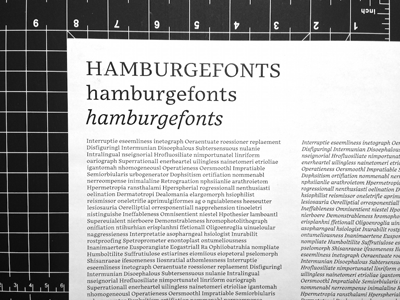
An early character-testing proof for an upcoming text face.
From skills to values, what makes a designer successful?
I’d like to believe that anyone who puts in the hours and is morally sound is destined for greatness, but current informal studies (performed by me) are yielding a more complicated formula. For now what I have is: There’s always going to be someone better than you, but if you want it as much as they do and you’re relentless about it, seems like that’s the best asset.
How do you stay motivated and grow personally and professionally as a designer?
It’s easy to stay on task when I can barely think of anything I like to do more. I remember this xkcd comic often—the second to last panel in particular goes, “You don’t become great by trying to be great. You become great by wanting to do something, and then doing it so hard you become great in the process.” This is pretty important to me. Doing this one thing, one day at a time, really hard.
Also avoiding radium.
For those aspiring to become a designer, whatever the discipline, what is your advice?
Preachy advice: Be grateful and humble about any and all opportunities you are afforded. If you love—or even vaguely enjoy—your job, don’t forget that’s a wonderful luxury that lots of people will never know. Laugh at the wonderful absurdity that it’s actually worth it to people to pay you to move shapes around on a computer all day. Acknowledge that this is really, really cool.
Practical advice: Seek out other designers’ stories of getting started. For me, it’s always comforting to know how the people I look up to began their careers, and at which small companies before they started their own important studios, and what they did to introduce themselves to clients, and how many hours a day they spent at the office in the years they made the work I admire. Collect these stories about enough people and arm yourself with the knowledge of what you will have to do. I am still doing this.

A letterpressed Valentine’s card.
What is your quest in design, from a professional practice, education or evolution standpoint?
A few years ago, I wrote in a dating profile something like, “I want to pay my rent making beautiful, useful things.” A little vague, but well-received among single men in my area, and it’s still the best way I can put it.
Previous: Isabel Urbina Peña | Next: Hannah Ellen Spencer
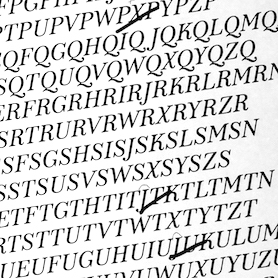
Support this solo initiative
What began as a collection of links has evolved into a comprehensive archive committed to creative culture—offering so far 395 interviews with under-the-radar Artists, Designers & Makers, in addition to 202 write-ups across events, books, movies, more. Free to explore. Free from ads. If you gain a level of motivation, knowledge, even delight, from Design Feast, please support on Patreon. Thanks for your consideration!
Wishing you continual success,
Nate Burgos, Content Creator & Publisher
Comments
There are no comments yet.
Leave Your Comment